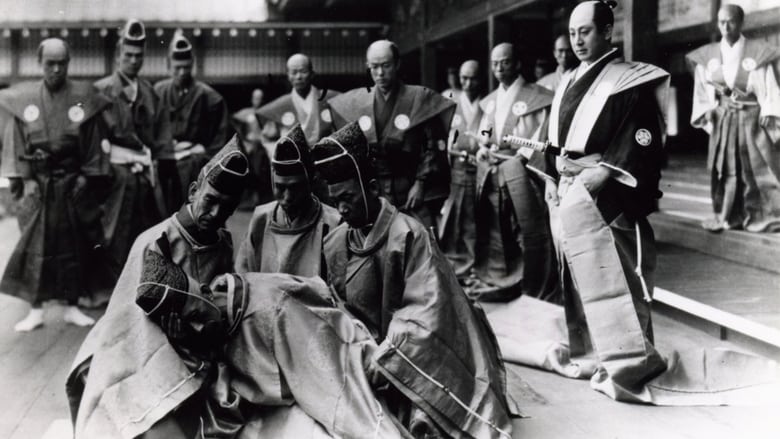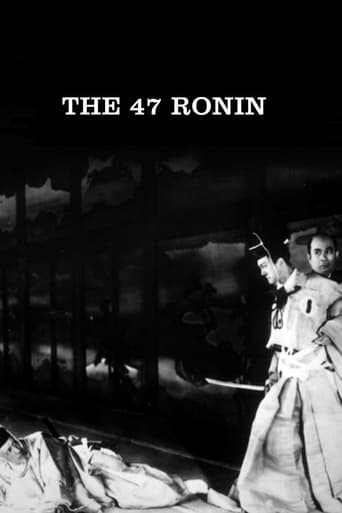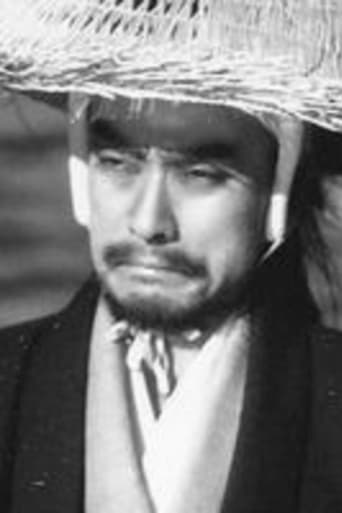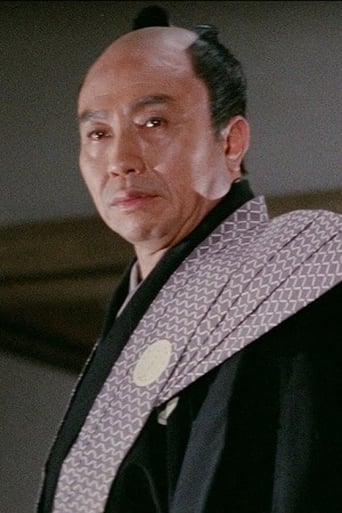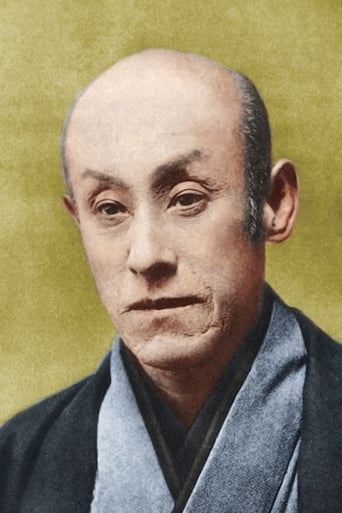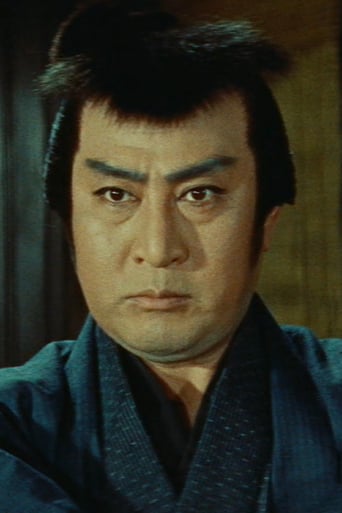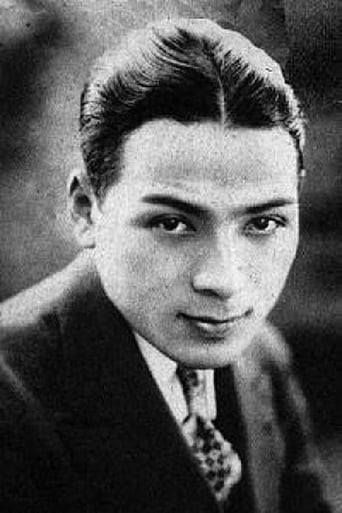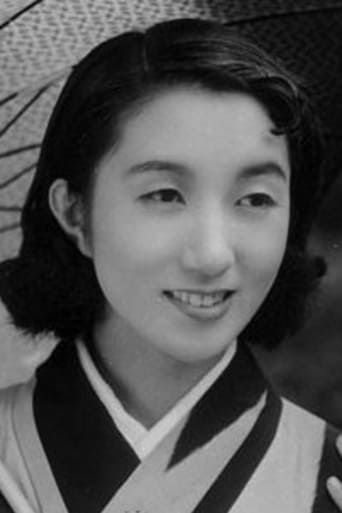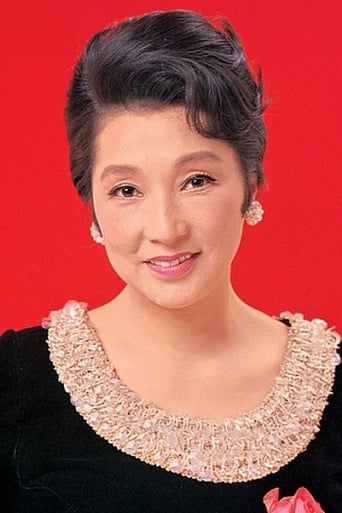In 1701, Lord Takuminokami Asano has a feud with Lord Kira and he tries to kill Kira in the corridors of the Shogun's palace. The Shogun sentences Lord Asano to commit suppuku and deprives the palace and lands from his clan, but does not punish Lord Kira. Lord Asano's vassals leave the land and his samurais become ronin and want to seek revenge against the dishonor of their Lord. But their leader Kuranosuke Oishi asks the Shogun to restore the Asano clan with his brother Daigaku Asano. One year later, the Shogun refuses his request and Oishi and forty-six ronin revenge their Lord.
Similar titles

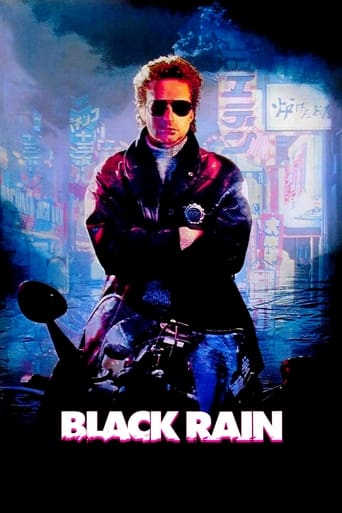

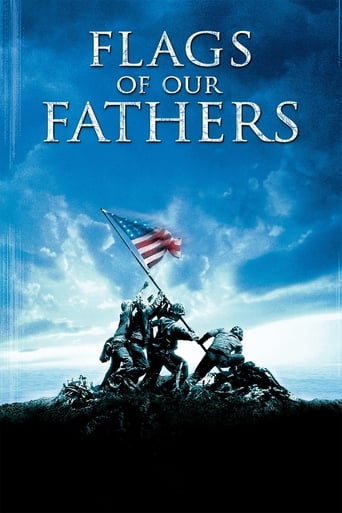

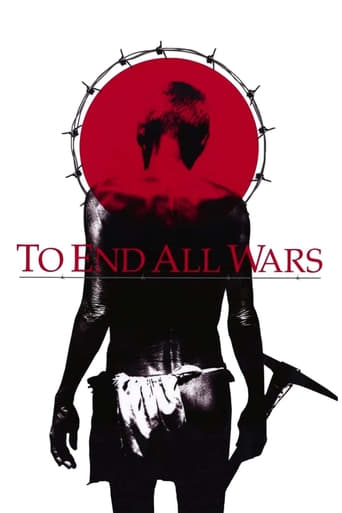
You May Also Like
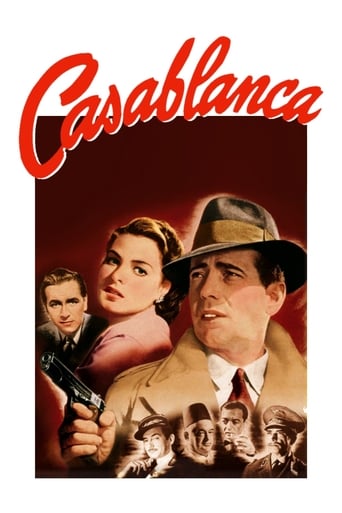

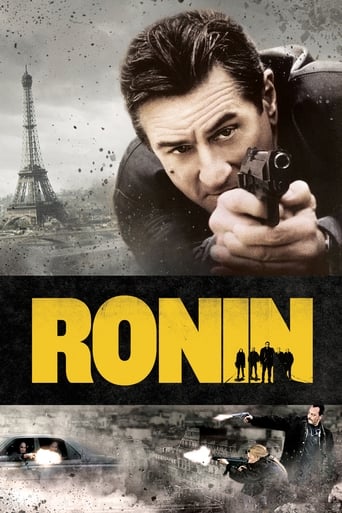
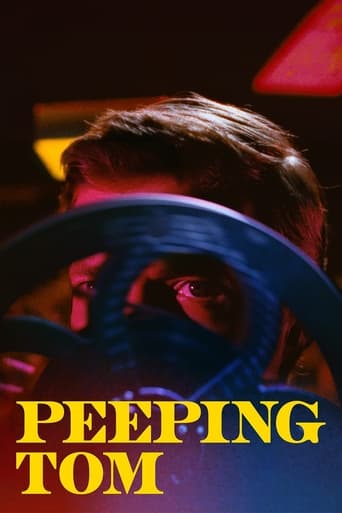

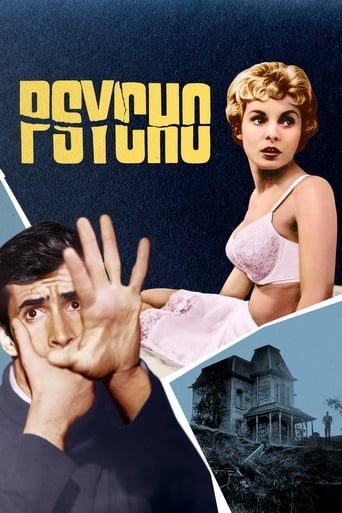

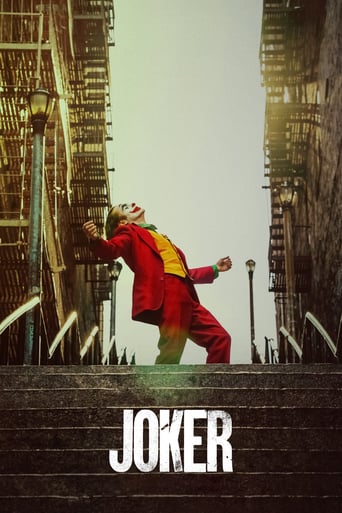
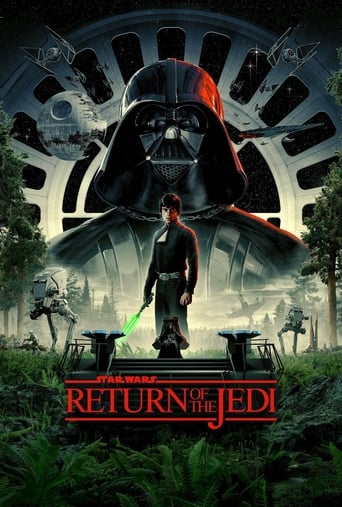

Reviews
At first rather annoying in its heavy emphasis on reenactments, this movie ultimately proves fascinating, simply because the complicated, highly dramatic tale it tells still almost defies belief.
A film with more than the usual spoiler issues. Talking about it in any detail feels akin to handing you a gift-wrapped present and saying, "I hope you like it -- It's a thriller about a diabolical secret experiment."
This is one of the few movies I've ever seen where the whole audience broke into spontaneous, loud applause a third of the way in.
The story, direction, characters, and writing/dialogue is akin to taking a tranquilizer shot to the neck, but everything else was so well done.
Watching this film, it seemed to me almost impossible to say anything about it without meditating on its year(s) of release- 1941-42. One expects a Mizoguchi film to look beautiful, but what struck me most was the way the camera traversed the elaborate sets. I've seen a couple of Mizoguchi's movies from the '30s and while they are handsome, I do not remember the elaborate tracking shots featured in this film. Jean Renoir had integrated complex camera movement into sound films in the '30s, and surely Mizoguchi was familiar with those works. But what Mizoguchi does here that seems so unique for the early '40s is the angles in which the camera travels- extreme high and low angles that expose ceilings and floors and which form layers of divided space between elaborate sets of courtyards and rooms. One associates such innovations with Citizen Kane which was released, and presumably shot, concurrently with this film. Mizoguchi developed these techniques independently, without any influence from Wells, the history-book "innovator."On a more sociological level, one must remember that this, Mizoguchi's only film that could be described as a "samurai flick", was produced and released as Japan was embarking on the imperialist adventures of World War II. Admittedly, it is no average entry into the genre. Instead of the ballets of sword-play and violence that one associates with samurai films, Mizoguchi focuses on the emotional repercussions of feudal law and discipline on different layers of Japanese society. Still, the revenge driven collective title-protagonist's self-destructive determination is clearly presented as heroically manly. Was even Mizoguchi the humanist caught up in the wave of nationalistic chauvinism then sweeping Japan? Is the film truly a call for the country's men to readily sacrifice their lives for the bloody glory of the nation? There are scenes that would seem to support such a reading, such as a rather embarrassing one in which the warriors tell themselves they mustn't act like lowly Chinese and instead adhere to the "samurai way." Clearly, this is the way the fascist authorities of the time understood the film. Yet, I could not wonder if Mizoguchi did not intend the film to subtly present a society defined by futile machismo, in which an unjust death sentence is avenged only so the avengers can go happily to the gallows, accepting their own absurd destruction because to do so is the samurai way.
Mizoguchi's Genroku CHUSHINGURA: originally written for the Japanese Hokubei Mainichi, San Francisco, November 5, 1976 Chushingura, the story of the 47 Loyal Ronin of Ako, the unofficial national epic of Japan, has been filmed probably more times than any other subject in Japanese film history. Starting in the silent days (first version a filmed Kabuki performance in 1913) there have been well over a dozen editions of this perennial favorite over the years, including a feature length cartoon about 47 dogs entitled "Wan-Wan Chushingura". ( N.B. wan-wan ="bow wow" in Japanese.)Of these various film treatments the only one which can be said to be fairly well known in this country is the relatively popular 1963 Toho all-star edition by Hiroshima Inagaki. In the Bay Area the Inagaki Chushingura has been so over promoted (since It happens to be owned by a Berkeley distributor) that most people around here are not even aware that other versions of the film exist. Another, and in the opinion of this writer, far more interesting treatment of the Chushingura story, directed by Kenji MIzoguchi in 1942, just after Pearl Harbor, is now on view for a weeks run at the Telegraph Repertory Cinema in Berkeley near the campus.This film, a landmark of the forties and a landmark of the MIzoguchi repertoire as well, did receive limited exposure earlier this year before small museum audiences at the Pacific Film Archive during the course of a MIzoguchi retrospective held there in April. The current run at the Tel-Rep is, however, to the best of my knowledge, the first real commercial exposure this remarkable film has ever had in this country.It is well known that fidelity is one of the cardinal Japanese virtues, and adherence to an established code of behavior another. As the ultimate dramatic exemplification of these fundamental Japanese values the Chushingura story is unrivaled. In the spring of the year 1702 at the height of the Genroku period the idealistic young Lord Asano of Ako castle (present day Hyogo Prefecture near Kobe) refusing to pay a bribe in return for instruction in courtly protocol, is baited into drawing his sword against the sleazy corrupt Master of Ceremonies, Lord Kira at the Shogun's palace. For this unpardonable breach of the courtly code he is forced to commit Harakiri, the Asano clan is disbanded, and all his retainers are reduced to outcast Ronin -- wandering masterless Samurai -- the lowest of the low in the strict Samurai social order.Responsibility for restoring the honor of the Aano clan now falls upon the shoulders of the chamberlain and chief retainer, Oishi Kuranosuke. The only way to achieve this is by a blood vendetta against Kira, but Kira is, of course, expecting this and goes into hiding.in order to lull Kira into a false sense of security Oishi In turn himself goes underground abandoning his family and pretending to lead a dissolute life devoted to pleasure. So determined is Oishi in maintaining this pretense to ensure the ultimate success of his mission that even the widow of Lord Asano is convinced that he has lost his nerve and she refuses to permit him to offer incense on the anniversary of Asano's death. on Christmas Day, 1703, after enduring more than a year if public shame and private deprivation, finally surfaces and leads the 47 Samurai who have remained loyal throughout (although many have not and have dropped out) in the famous attack in the snow on the Kira estate. Kira's head is taken as vowed and the loyal 47 march solemnly to Asano's grave to pay their last respects. The inescapable penalty for this act of defiance against the Shogunate was, of course, Seppuku for all involved --the ultimate example of Death before Dishonor and and all forty- seven Ronin accepted their fate of mass suicide by disembowelment -- the excising of ones own intestines without benefit of anesthetic -- with great dignity, upholding thus their collective code of honor to the last. The 47 Ronin became a latter day legend and their tomb a national shrine at which many Japanese spend a quiet moment of contemplation each year. (The tomb of the Forty Seven is located a few minutes walk from Mita station in Tokyo).Where the Inagaki version of this story is all color, pageantry, and swordplay, a typical TOHO spectacular, the Mizo version, in subtle shadings of black and white, is a far more penetrating study of the psychology and morality involved. It must be pointed out that the film was commissioned by the wartime Japanese government to foster the jingoistic Samurai spirit and it is much to Mizoguchi's credit that even under such pressure he was able to make a picture in which not a single sword fight is actually shown. All violent action, including the final assault on the Kira house, takes place off screen and is merely reported.MIzoguchi was concerned not with action itself, but with the psychological effect of violent action on people not directly involved. {Talk about contemporary relevance to a place called Ferguson, 2014!} This indirect psychological approach to violence coupled with the famous Mizoguchi floating camera Style and his uncanny sense of pictorial composition combine to make this four hour film a lasting experience. If you approach this film looking for the usual Samurai chambara clichés you will be disappointed. The First Time I saw it a couple of years ago I must admit I was a little bored. Seeing it for the fourth time the other night, the flashier Inagaki version began to pale by comparison. But then MIzoguchi was a genius whereas Inagaki was merely a competent contract director. Give this a BIG FAT **********
Nearly four hours long, this film can task even the most dedicated samurai viewer. It has some really good acting, but that is lost for most in the pace.It is a tale of the famous Ako Vendetta of 1702. I do not know how historically accurate it is, but it does give a glimpse into Japan's history.It also gives a glimpse of hara-kiri; the ritual suicide by slicing the stomach until the bowels spill out, then decapitation by a skilled swordsman.You are better served in seeing director Kenji Mizoguchi in the classic Sansho the Bailiff.
"The 47 Ronin" is a pathetic account of a real japanese event, that took place around 1780. 47 Samurai warriors were forced to commit Seppuku, ( ritual suicide by perforating your own stomach ) after they avenge their master's humiliation and eventual death.While watching the film, you are compelled to cry and pray for the admirable bravery, loyalty and humility of the Ronin (Masterless Warriors). Who besides their war skills, are profound philosophers and compassionate men.The most inspiring film in my life.
Top Streaming Movies











